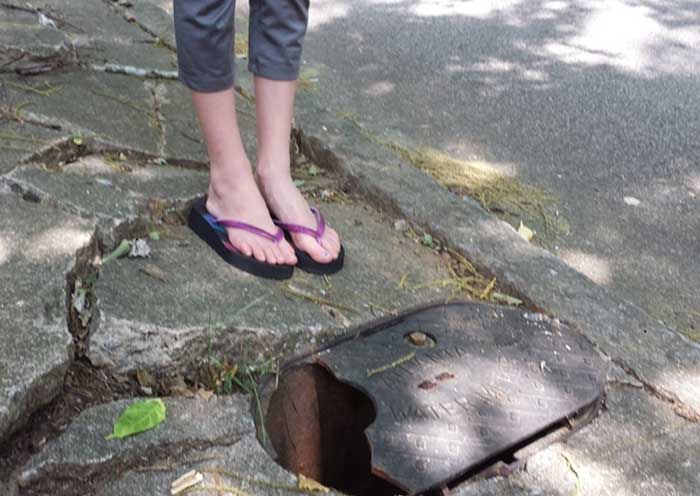There’s A Hole In The Sidewalk
Autobiography in Five Short Chapters
By Portia Nelson
Chapter One
I walk down the street.
There is a deep hole in the sidewalk.
I fall in.
I am lost …. I am helpless.
It isn’t my fault.
It takes forever to find a way out.
Chapter Two
I walk down the street.
There is a deep hole in the sidewalk.
I pretend that I don’t see it.
I fall in again.
I can’t believe I am in this same place.
But, it isn’t my fault.
It still takes a long time to get out.
Chapter Three
I walk down the same street.
There is a deep hole in the sidewalk.
I see it is there.
I still fall in … it’s a habit … but, my eyes are open.
I know where I am.
It is my fault.
I get out immediately.
Chapter Four
I walk down the same street.
There is a deep hole in the sidewalk.
I walk around it.
Chapter Five
I walk down another street.
A note from Rulik
There’s A Hole in the Sidewalk by Portia Nelson is not exactly a poem, nor a story. She calls it an autobiography. For many, it encapsulates the whole cycle of psychotherapy.
People come to seek help after they fall in the hole several times and start to realize that without taking some responsibility nothing will change. They are somewhere between the first and the second chapter.
If they are holding to the belief system of chapter one, they come and complain about their suffering or about unfairness. The therapist can listen patiently, but the client is not ready for introspection or for any alternative path.
The keyword in chapter two is pretend. There is a budding self-awareness of one’s part in the problem, yet, no readiness to take action.
The therapist can help enhance this seed that might grow in the third chapter to greater awareness. Now the hole is seen before the fall and there is recognition of the repeated pattern. With that comes more awareness and some responsibility.
That is really all that is needed for change. The attentive therapist can encourage the client to continue and repeat the practice.
In chapter four the problem is seen clearly, and with it the solution is clear. There is no more falling.
In chapter five therapy ends, as there is no longer a problem.


